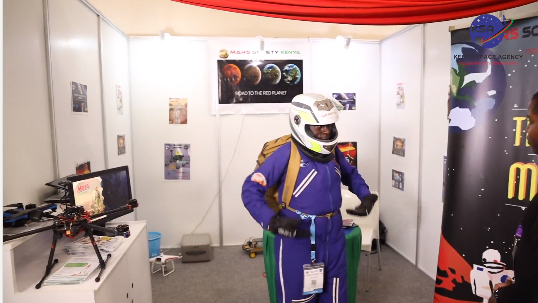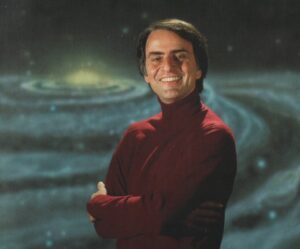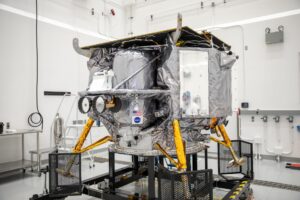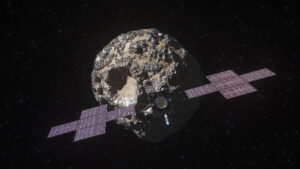The Kenya Space Expo & Conference 2022 – an Analog Astronaut’s Perspective
The Kenya Space Expo & Conference held from 15-17 June 2022 and whose theme was “Leveraging Space Capabilities for National Development”, the event brought together industry players in an interactive forum that showcased current projects and innovations and provided an opportunity for linkages and collaboration. You can learn more about the event here.
As one of the industry players, Mars Society Kenya was delighted to not only attend but as well participate at the Expo. This being the inaugural space expo not only for the country but also for our organization, we had to come up with the best product to showcase. Our goals and mission are to prepare the general public to support Humans-to-Mars and inspire more Elon Musks around the world, with the hope of one day we Kenyans being involved in terraforming the Red Planet.
Terraforming of Mars is a hypothetical procedure that would consist of a planetary engineering project or concurrent projects, with the goal of transforming Mars from a planet hostile to terrestrial life to one that can sustainably host humans and other lifeforms free of protection or mediation. The process would presumably involve the rehabilitation of the planet’s extant climate, atmosphere, and surface through a variety of resource-intensive initiatives, and the installation of a novel ecological system or systems.
Artist’s conception of the process of terraforming Mars
Long-distance space travel on the other hand brings with it a unique set of health problems. For example, how will the people who make the trip cope with the mental and physical rigors of the journey, leave alone arriving, surviving and thriving on a new world? It is for this reason that our focus is mainly on training and this is the product we chose to showcase. But how exactly could we showcase astronaut’s training in a 3mx3m stand? This is how the idea of an analog astronaut was conceived.
The Analog Astronaut
An analog astronaut is an individual that decides to play the role of an astronaut during a simulated crewed mission. Depending on the study and environment, a different requirement could be applied for a candidate analog astronaut. But there is also what we call serendipitous analogs, which are these mission-like conditions that kind of happen by accident, usually when you’re doing something completely unrelated and this includes Antarctic exploration, submarines, jail populations and prison populations. The Space Expo can also be added into this list.
The mission objective was to showcase our proposed Mars Kenya Analogs project as we also seek for funds and partnerships to help in the delivery of our projects and activities. The project borrows its concept from the HI-SEAS Mars Desert Research Station in Hawaii and other similar projects around the world. You can read more about the project here.
Crewmember above HI-SEAS habitat
Lift Off
We arrived at the Sarit Centre venue on Tuesday as had been instructed by the Kenya Space Agency (KSA), as the event organizers, to secure our stand and have it set up. And with everything ready on Wednesday, the event began with some introductory remarks from the KSA staff and some presentations. The exhibitors were then dispersed to their respective stands as the conference continued.
I got to our stand and began suiting up, just like in a real mission. Being a space enthusiast and having watched numerous manned missions especially by NASA and SpaceX, I was familiar with the suit-up process and all pre-flight activities and as I suited-up, I could imagine myself in one of those missions as one of the astronauts and tried rehearsing this, including the various timings as I counted down to lift off or rather for my case the arrival of attendants to our stand. I used my flight suit for my astronaut suit, a camping bag as storage for my life support equipment, a biker’s helmet and gloves, just as depicted on the HI-SEAS photo, and off course my lovely boots and socks.
I was so caught up and excited with events as they unfolded and by generally being there showcasing the future Kenyan astronaut, that I hardly realized time passing by. I tend to be a workaholic and very religious when it comes to my meals, such that I am usually unable to take breaks until my work is complete or in extreme conditions where I am forced to take something to help rejuvenate my strength and proceed with my activities. For this reason when I saw people going for lunch, I thought it was a ten o’clock tea break (probably because we started late from the opening ceremony) and felt that my body did not need anything at the moment and therefore pushed on. The other reason for not taking my lunch was simply because I imagined having just landed on Mars and having to traverse some miles to locate out habitat, just as depicted in the National Geographic movie series, MARS. How would I be able to measure my resilience if I kept munching whenever I felt like?
The pressure on my shoulders and back from the not so heavy life support (bag) was another factor that was tempting me with the thought of wanting to quit, not to mention the not so good warmth inside the helmet that was making my head sweat.
It wasn’t until when I saw exhibitors leaving and the event managers moving around instructing us to finish up for the day that it occurred to me that I had just missed my lunch and now the first day was over, so it was time to leave our stand, go home and come back the next day for the second day of the expo.
Missing my lunch and still feeling strong at the end of the day made me feel having achieved my day’s objective. And as I took off my ‘astronaut suit’, I tried imagining what my next series of activities would be, would I have been in an astronaut academy or from my Extra-Vehicular Activities (EVA). At one time, when asked by one of the KSA staff to comment on how my day had been, I actually told her that I had really enjoyed myself and still felt energetic to carry on, unfortunately the day had ended. I continued to ridiculously ask if the management was providing supper so I didn’t have to leave so soon.
But as I left the location, it suddenly hit me how thirsty I was and my throat was almost cracking up and I had to immediately quench my thirst before taking my ride back home. And as I boarded the bus, I realized that I didn’t have my locker key with me and the thought of having lost it along the way overwhelmed me as I feared losing anything that was part of our exhibition.
Along my way home I kept thinking how I would be spending my evening, was this a real mission and one thing that I really hated was the fact that I had to take a journey of more than 50 miles to the exhibition and back home every day for the next three days. I imagined what I would be doing contrary to this in a real mission, such as having to report to my personal physician for my medical routine reporting and who would help address my cracking throat and provide recommendations, to taking some time at the gym to help regain lost shoulder and back muscles from carrying my bag throughout the day. I would then take a warm bath and some massage before going for my supper. And of course take time to interact with my fellow crewmates while catching up on the day’s news then taking time to journal my day’s report and retiring early to bed to allow myself enough rest ready to face the next day’s activities as the mission progressed.
Unfortunately here I was arriving home twice tired from the 50 miles journey that I simply did not feel like preparing supper for myself and opted to snack up, just to fill my empty tummy and of course have some ample rest, which I really needed.
At the Kenya Space Agency stand holding a model of their proposed Kenya rocket named ‘Tembo’ (elephant tusk)
The Mission
I had to set my alarm since I had to wake up early enough to allow me time to search for my locker key and for any further recommendation would I not find the key. I took my warm bath, dressed up and departed, taking my long journey to the exhibition. As I got to the location, my fingers were crossed while praying that I find the key. Lucky enough, I was glad to see the key stuck to the keyhole (probably simply forgot to take it out after locking). I opened the locker and confirmed everything was secure and then went searching for some solution to my still sore/dry throat and also my breakfast.
As I was having my breakfast and arranging our stand, I was reminded of a few important activities during the day which we were being requested to attend to. One of these activities was the one of the conference sessions on Promoting Geo-STEM in Schools. I therefore opted not to ‘suit up’ since this was not part of the mission at the stand but I had my flight suit on since after all, I was still an astronaut only now attending some media event by the KSA, whom I was serving. And as I attended the conference, I wished I had someone to leave at the stand to attend to the visitors. Unfortunately all our members seemed to be interested with the conference sessions on this day and I simply had to balance the activities. This reminded me of the importance of working as a team and having laid out roles for each member in order to make the entire mission a success.
The Geo-STEM session was important to us in a number of reasons; one being that the speakers at the session are heads or organizations that we partner with in most of our activities and so when they too needed our support we had no option than to oblige. The other reason was that we have a STEM program and therefore this session was ours to learn a few things.
After the session I returned to our stand and suited up ready to continue with the rest of the day. This made me feel a little bit unfortunate since I had another session I wanted to attend but there was no one to replace me and as the mission commander, there was a mission to attend to.
On this day, I tried to keep up with time at the exhibition and take my meals appropriately. This came as a challenge because I simply could not take off my helmet. Luckily my visor was up since I had to be audible to the visitors and maintain visual contact, which the visor was hindering when down. I knew that this was a cause of alarm to my body in the case of a real mission due to things like radiation and being hit by debris, but my voice and facial expression was needed here and therefore the requirement to have my visor down was ignored. The other challenge was that I now had to squeeze everything I was consuming through my visor to my mouth, which was not easy.
I was really enjoying my day especially with the various media agents that were visiting our stand. This gave me a chance to practice my public speaking and I imagined doing a media event or simply giving an update of my flight and mission. I realized how difficult it is, especially with the different communication skills needed depending on which media house I was dealing with and their way of news reporting.
And as the day came to an end, I realized how wasted I was from trying to observed my feeding routine and wished I had stuck to my old habit of not feeding while in the middle of an activity. My throat was still an issue and so despite having taken something in the course of the day, I still had to get some drink to quench my thirst.
This time I was careful not to lose my locker key, which was now among my bunch of keys. I was still finding it hard to leave for home and still as I left, the same thought of how simplified the day would have been if I did not have to travel the more than 50 miles came back to me. And though I got home a little bit early I still felt not like preparing supper and opted to snack but better enough to hold my stomach. I feared consuming food that would accidentally end up upsetting my stomach and giving me a quite a hard day the next day, and of course the issue of having a personal medical physician arose. I slept feeling much better as the second day’s outcomes happened to be better than the first day.

The Splashdown
As I woke up and prepared to what I knew was the last day, there was a sudden rush of thought that I didn’t have to attend the day and I simply knew my body was getting tired. But this was part of the mission and better still, this was the last day and the day that I get to ‘go back home’. I have always wished that when I get to a real mission it would not have to end and that is why I always wish I can go to Mars and stay there, not having to come back home, because this is where the science is. It is not that I hate Earth (or home) but once a scout, always a scout – in this case, once an astronaut, always an astronaut and there were missions to cover as part of my mission, which was not ending soon.
Getting to the venue I chose not to repeat the previous day’s mistakes on munching anyhowly but rather staying true to myself and see the day end. And as I was setting up our stand, there was hope that the being the last day, the attendance would be better than the other days. Unfortunately as the day unfolded our expectations were cut short.
Being the last day, our sessions began with the closing ceremony in which various aspects stood out. Of great importance was word that the Cabinet Secretary Ministry of Defense, Honorable Eugene Wamalwa would be paying a visit to the stands. To me, this was the perfect example of a media event and therefore I chose not to suit up, but maintained my flight suit. The other was an honorable mention by the agency as part of the events’ summary of activities.
Going back to our stand, movement seemed to be limited as we waited in anticipation for the CS to arrive. It is this that turned down our hopes of having a full house of visitors, this being the last day. Eventually the CS arrived and the hall which housed all stands secured. As the CS moved around, I hoped that he would visit our stand and finally give us the publicity we so much need. Unfortunately he seemed to pay special attention to organizations that have been in the business for a long time or delivering projects in line with the government agenda. For us, this being our second year and doing something most people including the agency term as a dream, the CS simply skipped us but was kind enough to say ‘Hello’. This kind of broke my heart but having watched the video of the events’ summary and seeing our organization given a mention went far in assuring us that publicity had been addressed.
The CS left and visitors were allowed to come. And as the day came to an end, I still found myself wishing I did not have to park and leave, despite feeling quite the opposite earlier that day. Especially when a bunch of space enthusiasts visited our booth and finding interest in our activities that it ended up being quite an engaging conversation rather than we marketing ourselves, that the event managers had to keep notifying us that time was up and we had to start disassembling the stand.
The conversation was so engaging that I was almost the last person to leave the premises, which I really did not feel like leaving. Though the event has come to a close, I felt that as an astronaut there were other things to address as part of my post flight activities. And as I left the premises, I still felt my thirst but with the amount of luggage I was carrying and being overwhelmed by a combination of all the successes of the event on our side as an organization from the very first day, I simply felt that what I needed to do is get the luggage home safely and then embark on my celebratory mood.
Challenges
It was so unfortunate that as soon as I got home, my body refused to function and what had been planned to be a fun night out in my celebrations turned to be a night early to bed. And as I woke up the next day on Saturday, I simply realized that what I was trying to self-medicate on was some flu-like conditions. The fear that I might have contacted COVID simply came in and I had to result to going to quarantine. Again the thought of having a personal medical physician came in. Though I hardly get sick, I was still fearful of what the physician might say could I be having one, since I hardly take any medication due to my strong immunity and so I end up being fearful whenever it comes to a situation I might be forced to take medication.
The other aspect was definitely taking the long journey home. I would wish if possible, the agency can next time consider demographics of those residing outside the event facility to provide the exhibitors ample time to rest.
The regulation to not have any product go beyond the stand area should probably also be considered next time, as we imagined a scenario in which we had to set up a mockup of the simulation habitat, there was simply no room for this, which is something that need to be showcased, being our major proposed project.

The Takes
Nothing sounds better like the response we received from both the passersby and visitors at our stand. Each day had its own take out and we appreciate all who took time to visit our stand and offer words of advice and suggestions to things the organization should embark on.
Worth noting is the Programmes Lead at Young Scientists Kenya, Vanessa Inziani, for her words of advice on how to best run our STEM activities and for assurance of support going forward with our proposed activities as part of our STEM curriculum/activities.
Our partners, Kenya Flying Labs and Albert Migowa – Counseling Psychologist and Emotional Intelligence Coach and Speaker, for adding a sparkle at our stand and service/product scope.
The Content Creator, Founder and CEO of Blackstar Media – Kenya, Kingwa Kamencu for her encouragement and support in running our activities. She was so impactful during the time of her visit in even managing and running activities at the stand as though already a member. These are the passionate kinds of individuals the organization is looking for, to help build our home on future home on Mars as we even become part of the solution as humankind on Mars will be involved in terraforming the ‘Red Planet’.
Not forgetting Mcloud Givondo, lecturer – University of Nairobi, whose words of advice and assistance at the stand was overwhelming, and especially for being there at the same time the bunch of space enthusiasts attended our stand, together you helped us see what the future of the space community and more so future Martians in the country is really like. We look forward to more levels of engagement with all of you.
To the Kenya Space Agency for believing in us and giving us a platform to market ourselves and for the honorable mention during the expo’s summary of events, despite finding our mission kind of a dream. It is this dream that we intend to make a reality in our lifetime and we need all the support we can get. More on this can be found here.
And of course the crown jewel of it all are the kids who we are laying the foundation for – this young inquisitive generation. Out of all the interactions we had during the three days, none was as fun and inspiring as the one we had with these young ladies at our stand; passionate about space and hopefully our future Martians. I pray that the fire inside them never fades.
Image courtesy of SayariLabs
Conclusion
The importance of a Mars Simulation Habitat as part of training and research for and by future Mars explorers cannot be under emphasized. A Mars Analog Research Station (MDRS) also known as a Mars Simulation Habitat is a project initiated in order to develop key knowledge needed to prepare for the human exploration of Mars. The project’s goals are to develop field tactics based on environmental constraints (i.e., being required to work in spacesuits), test habitat design features and tools, and assess crew selection protocols. The location for this facility must therefore be as Mars-like as possible, from its terrain, climatic conditions and appearance.
From the moment they arrive at the MDRS, crews enter a “living on Mars” simulation. Crew members must wear an analogue space suit simulator when completing tasks outside the Hab (habitat/facility) to simulate the protection they would need from the harsh Mars environment. Complete analogue space suit simulators include a helmet, flight suit, boots, gaiters, gloves, an air supply pack, water pack, and a radio. Hand-held radios mounted on the suits’ helmets with externally mounted push-to-talk switches are used to communicate with the Habitat and with fellow analog Mars surface explorers on the same extra-vehicular activity (EVA). There is always one crew member in the Hab for safety reasons to act as Hab-Com/CapCom (Habitat/Capsule Communication).
Destinations for EVAs can be chosen from an established waypoint database and attained either on foot or by an all-terrain vehicle.




